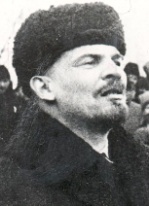
Aaaacchhoooo!!!! The epicentre of this sneezing encounter is in our Nose. This reaction is a response to an irritating action inside our Nose. Our Nose is a very delicate organ of our body but it serves as the most important part of our living – breathing. This Nose of ours is like an ice-berg; it’s just a small part of it that we see protruding outside, but there are a whole lot of extensions underneath. Let’s find out more about the Nose.
Nose is the most prominent structure between the eyes, which acts as an entrance to the respiratory act and contains olfactory organ. It is through the Nose that we get air for respiration, it aids our sense of smell, conditions the air by filtering, warming as well as moistening it; and cleanses itself off the foreign particles and dirt that is extracted from inhalation.
A Nose has five different parts. These are as follows:
External Nose: It is the triangular-shaped projection that we can see and feel.
Nostrils: They are the two openings through which we breathe in and out.
Nasal passages: They are the two passages inside the nostrils which have a layer of mucous membrane that secretes a sticky fluid known as mucus which filters the dirt in the air while breathing in, alongwith cilia – tiny hair inside the nasal passages.
Septum: It is the wall that separates the nostrils into two. It is made up of bones and the flexible connective tissues, the cartilages. The septum is also covered by mucous membrane on both the sides.
Sinuses: These are the air-filled cavities in the skull near the nasal passages and there are four pairs of it which are all layered with mucous membrane.
The four types of sinuses are as follows:
Maxillary sinus: It is the largest sinus which is present at birth and also develops with age until puberty. It is located in the cheekbones.
Frontal sinus: This one is located in the lower centre of forehead and it starts developing only by the age of seven.
Ethmoid sinus: It is located between the eyes, near the nasal bridge which is the upper bony part of the Nose. Just like maxillary sinus, this one is also present at the time of birth and its growth is continued until puberty.
Sphenoid sinus: This pair of sinus is located deep inside the face behind the nasal cavity behind the Nose.

The main function of Nose is breathing and filtering the air making it healthy for our lungs. The inner lining of the Nose is spongy and when blood flows through the nasal vessels, it swells and gets heated up. Thus, when we breathe in, it heats up the air. The mucous membrane covering the Nose and sinuses produces a sticky substance called mucus. This substance wets and humidifies the air and traps unwanted organisms like bacteria and viruses. The microscopic filaments protruding from the inner membrane of the Nose, known as cilia, keeps on waving uniformly, transferring a layer of mucus in regular intervals of 5–8 minutes to the back of the Nose. These layers of mucus are swallowed instead of going down to the lungs and the chemicals in the stomach destroy the unwanted organisms. Another function of the Nose is to identify good or bad smells.
When we breathe in the air, it is slowed down by a long, narrow, curled and spongy bone known as turbinate. It is also known as nasal concha. The air is then directed towards the olfactory epithelium, which is a tissue concerned with detection of smells, in the roof of the Nose. Then the odour molecules in the air reach the olfactory receptor neurons, which transmits the signal to our brain. Thus, our brain instantly recognises the smell from the exposures in our past and reminds us if it is a good or bad smell.
The diseases related to Nose are:
Rhinitis: It is the swelling of the mucous membrane that covers the Nose.
Sinusitis: It is the swelling of the mucous membrane covering the sinuses.
Rhinosinusitis: It is the condition when both rhinitis and sinusitis occur together. It is a common disease among the asthma patients.
Rhinitis and Sinusitis are mainly caused due to the allergic reaction of the airborne substances known as allergens. Such allergens are available in dust or pollens. It might also be due to some viral infections leading to common cold. Genetic factors are also responsible for such diseases. The symptoms of rhinitis are swelling of the turbinates and front end of the septum. It thus blocks the Noses and produces mucus in excess leading to a runny Nose. It is thus followed by repetitive sneezing and itching in the Nose. The symptoms of sinusitis are feelings of pressure in the face and forehead that might be painful and also have coloured discharges. It is due to the swelling of the sinuses linings that blocked the gaps.
According to a survey conducted by Professor Abraham Tamir of Ben-Guivon University, Negev, Israel, there are 14 different types of Noses. They are as follows:
 |
The Snub Nose of Wayne Rooney |
 |
The Fleshy Nose of Prince Philip |
 |
The Duchess Nose Kate Middleton |
 |
The Hawk Nose Barbra Streisand |
 |
The Greek Nose of Fabregas |
 |
The Aquiline Nose of Daniel Radcliffe |
 |
The Roman Nose of Tom Cruise |
 |
The Mirren Nose of Helen Mirren |
 |
The Rumpole Nose of Leo McKern |
 |
The Celestial Nose Carey Mulligan |
 |
The Lenin Nose of Vladmir Lenin |
 |
he Redknapp Nose of Harry Redknapp |
 |
The Nixon Nose of Richard Nixon |
 |
The Tara Nose of Palmer-Tomkinson |
G Kowledge of | 0 Comments >>
0 Comments
Leave Comment
Your email address will not be published. Required fields are marked.